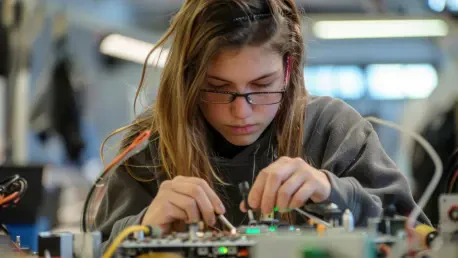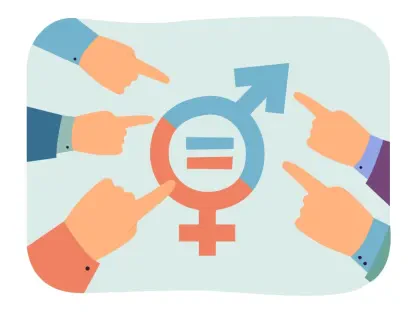In the dynamic world of education, Australia faces a persistent challenge with the STEM (Science, Technology, Engineering, and Mathematics) skills gap, a problem compounded by stark gender disparities in science achievement and declining student engagement as years progress. This issue not only threatens individual futures but also the nation’s capacity for innovation and economic growth. Amid this backdrop, Education Perfect (EP), a pioneering educational software provider, has unveiled a revamped science curriculum that aims to transform the landscape of STEM education. Launched for Term 3, this initiative is more than an update; it’s a strategic response to systemic challenges, designed to inspire students, support educators, and address inequities. With over 5 million assessment questions already answered on the platform, its early impact is clear. This article explores how EP’s innovative approach is poised to bridge critical gaps, ensuring that science education becomes a gateway to opportunity for all learners across Australia.
Bridging the Gender Divide in Science Education
Australia’s gender gap in science achievement stands out as one of the most significant worldwide, with girls often lagging behind their male counterparts despite early potential in primary years. This disparity, if left unaddressed, risks perpetuating underrepresentation in STEM careers, limiting diversity in fields crucial to future advancements. EP’s revised science platform takes a proactive stance by embedding inclusivity into every facet of its content. By carefully curating diverse themes and eliminating gender bias, the curriculum ensures that all students feel seen and valued. This thoughtful design seeks to dismantle barriers that historically discouraged certain groups, particularly girls, from pursuing science with confidence. Beyond representation, the platform fosters an environment where every learner can envision a place in STEM, addressing not just current disparities but also laying the groundwork for a more equitable future in education and industry.
The impact of EP’s focus on inclusivity extends into how content is delivered to engage a broad spectrum of students. Interactive elements like videos and simulations cater to different learning styles, while structured lessons break down complex ideas into manageable steps. This approach is especially beneficial for those who might feel intimidated by science, offering them a pathway to build skills incrementally. Diagnostics within the system identify struggling learners early, enabling targeted interventions that prevent disengagement before it becomes entrenched. Such measures are critical for maintaining interest among underrepresented groups, ensuring that the gender gap narrows over time. By prioritizing equity in design and delivery, EP’s platform aims to cultivate a generation of diverse STEM talent, ready to tackle global challenges with fresh perspectives and innovative solutions.
Harnessing Technology to Boost Student Engagement
One of the standout features of EP’s science revamp is its integration of cutting-edge technology to make learning more captivating and effective. Traditional teaching methods often fail to sustain student interest in science, particularly as concepts grow more abstract in later years. EP counters this by incorporating multimedia tools, interactive simulations, and animations that bring scientific principles to life in vivid, relatable ways. These resources transform passive learning into active exploration, allowing students to visualize and experiment with ideas that might otherwise seem distant or daunting. This tech-driven strategy not only enhances comprehension but also reignites curiosity, addressing the decline in engagement that plagues STEM education. As a result, students are more likely to develop a lasting passion for science, a crucial step toward closing the skills gap.
Beyond surface-level engagement, EP’s platform leverages technology to personalize the learning experience, ensuring no student is left behind. Real-time analytics and diagnostic tools provide insights into individual progress, highlighting areas of strength and weakness with precision. Teachers can use this data to tailor their instruction, offering additional support where it’s most needed. This adaptability is particularly vital in a subject like science, where foundational gaps can quickly derail a student’s confidence and performance. By meeting learners at their level and adjusting to their pace, the platform fosters resilience and mastery over time. This personalized approach, powered by technology, represents a significant shift from one-size-fits-all education, promising to keep students invested in STEM fields through innovative and responsive teaching methods.
Supporting Educators with Innovative Tools
Teaching science in today’s classrooms often comes with immense pressure, as educators juggle lesson planning, grading, and individual student needs under tight schedules. EP’s updated science platform alleviates these challenges by offering a suite of time-saving tools that streamline administrative tasks. Features like automated grading and pre-built assessments reduce the workload, while real-time analytics through Learning Snapshots provide actionable insights into student performance. Cameron McDonald, Head Teacher of Science at Narrabeen Sports High School, praises the platform for fostering collaboration among staff through a shared framework and easing the onboarding process for new teachers. By minimizing repetitive tasks, EP enables educators to focus on what truly matters—delivering high-quality instruction that inspires and educates.
Moreover, the platform’s design goes beyond efficiency to enhance the overall teaching experience, creating a sustainable environment for educators. With resources aligned to Australian curricula, teachers no longer need to spend hours crafting materials from scratch, allowing them to dedicate more energy to classroom interaction and student support. The system also encourages professional growth by providing a consistent language and structure for science education, which strengthens teamwork and communication within schools. This emphasis on teacher empowerment addresses a critical aspect of the STEM skills gap: ensuring that educators are equipped to guide students effectively. By reducing burnout and enhancing capability, EP’s tools lay the foundation for a teaching workforce that can drive meaningful progress in science education across diverse classroom settings.
Innovating with AI for Personalized Feedback
A defining element of EP’s science offering is its AI-powered feedback tool, which revolutionizes how students receive guidance on their work. Manually grading extended responses is a time-intensive task for teachers, often limiting the depth of feedback provided. This AI innovation steps in to deliver personalized, constructive critiques in real time, saving educators countless hours while ensuring students gain valuable insights into their performance. Kelly Hollis, Senior Content Product Manager of Science at EP, emphasizes that this tool balances efficiency with educational impact, allowing learners to refine their understanding immediately. Such advancements highlight how technology can elevate learning outcomes without sacrificing the human element of teaching, offering a scalable solution to classroom challenges.
The benefits of AI-driven feedback extend to fostering student independence and growth, key components in tackling the STEM skills gap. By receiving detailed, timely responses to their work, students can identify mistakes, understand underlying concepts, and make corrections without delay. This iterative process builds critical thinking skills essential for science, encouraging learners to take ownership of their progress. For teachers, the reduction in grading time translates to more opportunities for direct engagement with students, whether through discussions or targeted interventions. This synergy between AI efficiency and personalized education underscores EP’s commitment to creating a learning environment where every student has the tools to succeed, particularly in a field as demanding and vital as science.
Reshaping Classroom Dynamics for Future Success
In practice, EP’s tools are transforming science classrooms by enabling data-driven decision-making that enhances student outcomes. Real-time data allows teachers to monitor focus, facilitate peer marking, and pinpoint students who need extra support before issues escalate. This proactive approach shifts the emphasis from reactive problem-solving to preventive care, ensuring that disengagement—a major contributor to the STEM skills gap—doesn’t take hold. By providing a clear picture of classroom dynamics, the platform empowers educators to create tailored strategies that address individual and group needs. Such precision in teaching fosters an environment where students feel supported and motivated to excel in science, preparing them for future challenges in a tech-centric world.
Additionally, EP’s use of pre- and post-tests redefines how progress is measured, moving away from a sole focus on scores to a broader view of student growth. This shift encourages reflective teaching practices, where educators can assess the effectiveness of their methods and adjust accordingly. The result is a more adaptive and responsive classroom, where evidence-based strategies drive continuous improvement. For students, this focus on development rather than just performance builds resilience and a deeper appreciation for learning. By cultivating these qualities, EP’s platform not only improves immediate academic results but also equips a new generation with the mindset and skills needed to thrive in STEM fields, ensuring long-term impact on Australia’s educational and professional landscape.
Paving the Way for a STEM-Driven Tomorrow
Reflecting on the strides made, Education Perfect’s revamped science curriculum emerges as a pivotal response to Australia’s STEM challenges, particularly in addressing gender disparities and student disengagement. The platform’s blend of inclusive content, advanced technology, and teacher support redefines how science is taught and learned in classrooms nationwide. Its AI innovations and data-driven tools empower educators to deliver impactful instruction, while personalized learning experiences inspire students to embrace STEM with confidence. Looking ahead, the focus should shift to scaling such initiatives, ensuring broader access across diverse regions and schools. Policymakers and educational leaders might consider partnerships to integrate similar technologies, while continuous evaluation of student outcomes could refine these tools further. By sustaining this momentum, the path is cleared for a future where every learner, regardless of background, can contribute to a thriving, innovative society.









